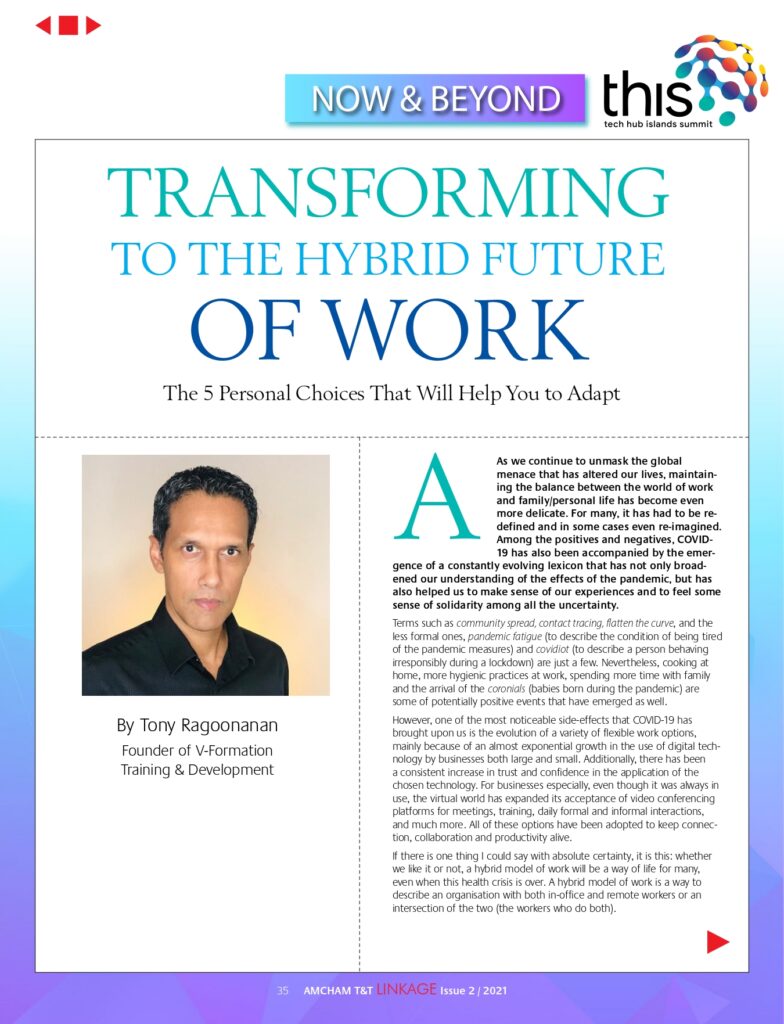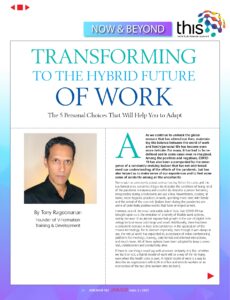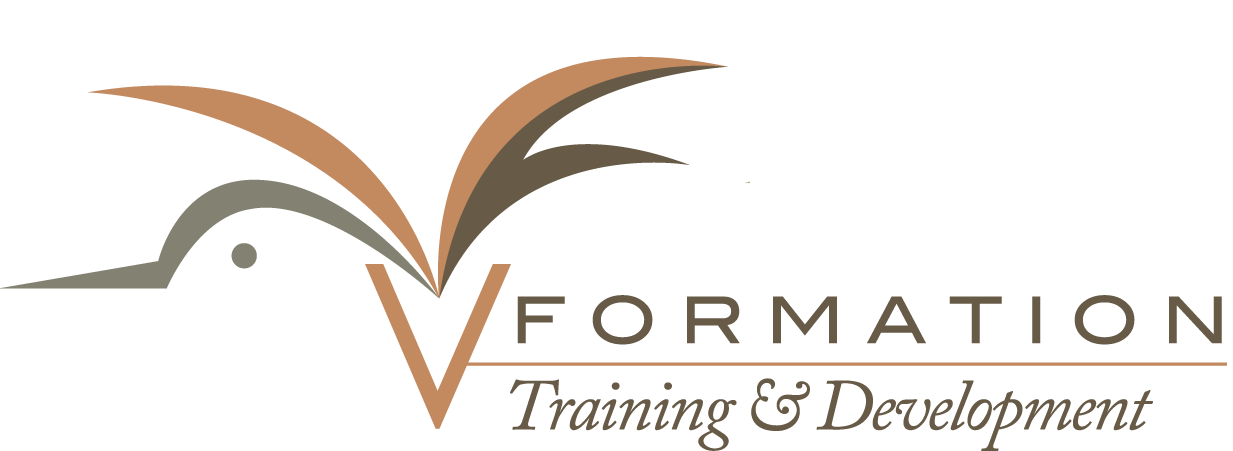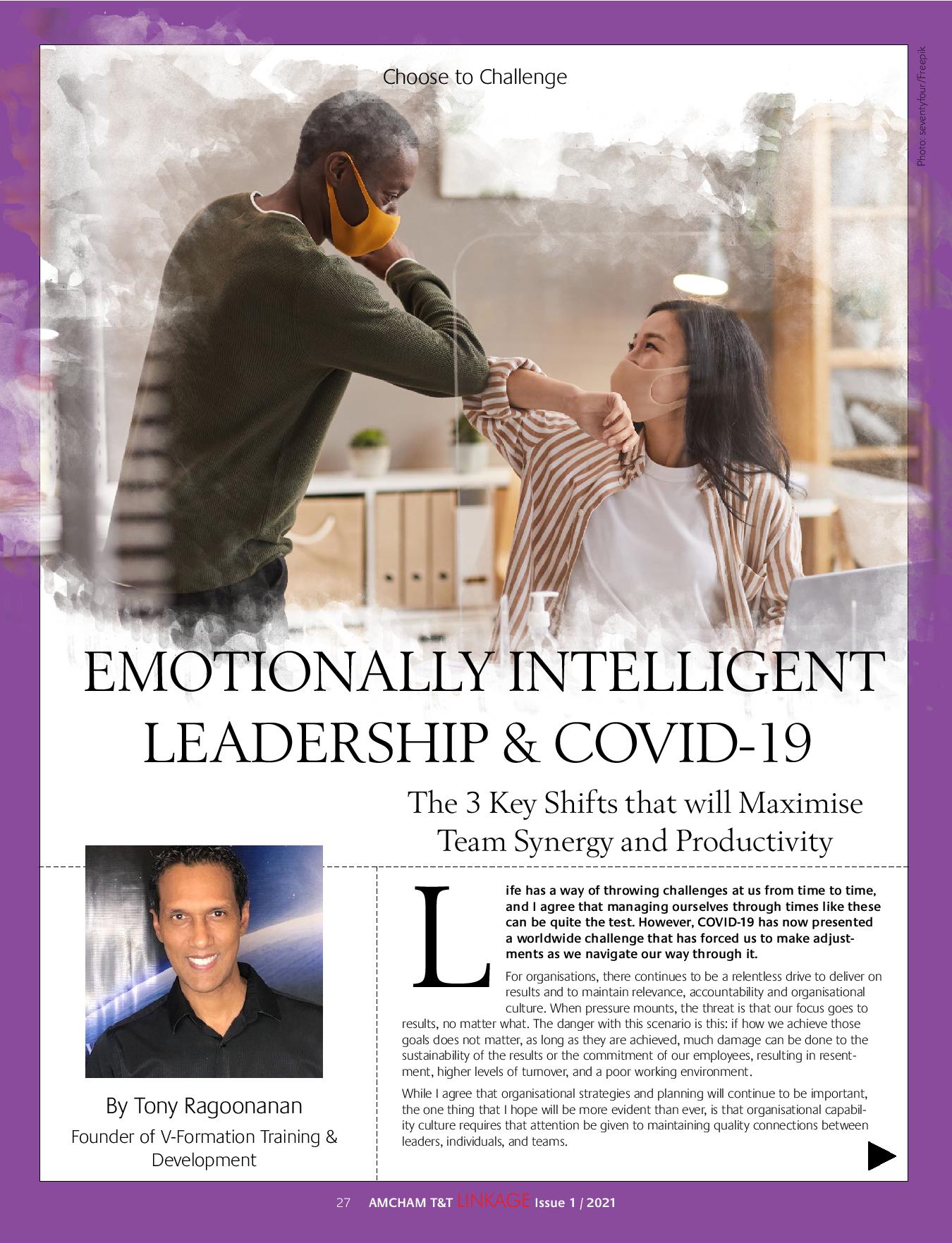
Blog
“Transforming to the Hybrid Future of Work”
Whether you work at home, on-site, or a combination of the two, we may all, at some point, have to deal with colleagues whom we are not in physical contact with, either temporarily due to Covid restrictions or permanently because we have adapted to the change and decided to stick with it even after restrictions are lifted. If this is the case, then this may be useful to you.
 I am thankful once again that The American Chamber of Commerce of Trinidad and Tobago (AMCHAM T&T) has featured my article in their NEW Linkage publication: NOW AND BEYOND. #LinkageMagazine
I am thankful once again that The American Chamber of Commerce of Trinidad and Tobago (AMCHAM T&T) has featured my article in their NEW Linkage publication: NOW AND BEYOND. #LinkageMagazine
The article:
“Transforming To The Hybrid Future Of Work”
….will focus on 5 personal choices that we can make that will help us to adapt.
Read the full article here:
https://www.amchamtt.com/linkage-magazine (Page 43)
TRANSFORMING TO THE HYBRID FUTURE OF WORK
In the interest of continuous improvement, I feel these ideas can drive value to those organizations and individuals who are still challenged by the pandemic.
Please feel free to let me know your thoughts!!
#remotework, #hybridwork, #adaptability, #productivity, #motivation
FULL ARTICLE HERE:
As we continue to unmask the global menace that has altered our lives, maintaining the balance between the world of work and family/personal life has become even more delicate. For many, it has had to be re-defined and in some cases even re-imagined. Among the positives and negatives, Covid has also been accompanied by the emergence of a constantly evolving lexicon that has not only broadened our understanding of the effects of the pandemic but has also helped us to make sense of our experiences and to feel some sense of solidarity among all the uncertainty: Terms such as “Community spread,” “Contact tracing,” “Flatten the curve,” and the less formal ones; “Pandemic fatigue” (to describe the condition of being tired of the pandemic measures) and“Covidiot” (to describe a person behaving irresponsibly during a lockdown) are just a few. Nevertheless, cooking at home, increased hygienic practices at work, spending more time with family and the arrival of the“Coronials” (babies born during the pandemic) are some of the potentially positive events that have emerged as well.
However, one of the most noticeable “side-effects” that Covid has presented is the evolution of a variety of flexible work options, mainly because of an almost “exponential” growth in the use of digital technology by businesses both large and small. Additionally, there has been a consistent increase in trust and confidence in the application of the chosen technology. For businesses especially, even though it was always in use, the virtual world has expanded its acceptance of video conferencing platforms for meetings, training, daily formal and informal interactions, and much more. All of these options have been adopted to keep connection, collaboration and productivity alive.
If there is one thing I could say with absolute certainty, it is this; whether we like it or not, a hybrid model of work will be a way of life for many even when this health crisis is over. A hybrid model of work is a way to describe an organization with both in-office and remote workers or an intersection of the two (the workers who do both).
A new research report based from accenture.com, “The Future of Work: Productive Anywhere” (based on 9,326 responses from global workers) found that 83% of employees say a hybrid work model in which they can work remotely between 25% and 75% of the time is optimal.
The report also expands on the reasons why some workers want to go back to the office, and the two that stand out are easier access to technology and face-to-face collaboration with colleagues. So it is clear that the hybrid model may not work for everyone. Nevertheless, according to this report, there is still a large percentage of people who feel safer at home, who want the freedom to take productive breaks when they need to and who feel that the quality of life is better while working from home.
Naturally, the question will now be:
Are we going to get the same kind of collaboration, social connection, and momentum as we did with consistent in-person collaboration?
The success of a hybrid workplace model depends on both organizational and personal resources. For some people, their remote workspaces are ill-matched for the types of spontaneous interactions and collaborations that occur routinely at the office, so regardless of what constitutes “the office,” organizations will have the responsibility to support the needs of all of their employees. This will include flexible workplace designs and technological support that enable employees to connect from wherever they can be most productive.
On the personal side, even if everyone is technologically equipped, what continues to present a challenge is the approach that many individuals have adopted to maneuver their way through their work-life scenarios. Many have children, chores, other non-work-related tasks, and incessant calls from the office; either by colleagues who need more support, by leaders who need information, or who are simply insecure because they can’t actually see their employees. Balancing it all can be extremely demanding.
Therefore, a major human resource determinant of success (which is my focus here) are the personal choices that individuals (leaders and their employees who work in any type of hybrid arrangement) can make to align their personal and organizational goals and to adapt to this inevitable transformation.
Here are 5 personal choices to consider:
1. Build digital fluency
About 15 years ago, while I was still working in the pharmaceutical industry, one of my colleagues rightfully stated, “technology is the future.” At the time, even though I understood where we were naturally heading as an organization and a society, I never anticipated that Covid would bring such a catalyst. The truth is that work-from-home options have been around long before this pandemic, but the extent to which it has evolved has compelled many of us to learn the skills (not always by choice) that will make us efficient from wherever we are. This means being an active player in building digital fluency.
Digital fluency is not just about literacy. It’s not just about following a set of instructions and knowing how to use the technology. Fluency is broader as it goes beyond the skill level. It means operating at a level that incorporates key competencies and capabilities that enable us to navigate collaborative spaces, innovate and solve real-world problems.
It can feel chaotic, but choose to jump into the “chaos!!” I use the word chaos because this is sometimes what the learning curve feels like when we are exposed to new technology. However, chaos can bring order if we work at it and there are many great reasons why we should. For one thing, digital fluency will will open the door to improved communication, higher efficiency and autonomy, in effect, making us more accountable for many aspects of our performance expectations. Additionally, we will be able to manage our time more effectively, especially if we are in a hybrid environment where aspects of digital fluency are part of the key performance criteria.
As a bigger picture, digitally fluent organizations will be more productive and will provide greater flexibility for employees. This can, in effect, open the door to higher levels of job satisfaction and motivation.
2. Don’t avoid virtual meetings
Love them or hate them, virtual meetings are here to stay. Whether you are in-office, remote or a combination of both, the business related interactions you have with your boss, team members or other personnel should never be sacrificed.
Here a few key reasons why:
They help employees to become more oriented to virtual collaboration and contribution.
They break the feeling of isolation for those working at home.
They keep conversations going so that initiatives are front and center (Higher levels of clarity).
They continue to strengthen social bonds at work.
Remember, when you are in any type of hybrid arrangement, don’t delay questions or other conversations for when you are at the office. This may cause you to lose valuable time. For leaders, having effective virtual meetings will help to alleviate fears about the loss of control, loss of connection, and decreased levels of collaboration that this scenario is perceived to present.
Virtual meetings provide support to the existing physical face-to-face meetings already in place for some and will support the productivity of employees regardless of where they live.
3. Keep work hours and household duties separate
Keep in mind that whether you are working from home on a part or full-time basis, it is unlikely to be an 8 to 4 situation, therefore conversations with colleagues/boss on expectations, objectives and deadlines should be the focus. This will ensure support from a team who understands that the work at home dynamics are a bit different and that time must be managed differently.
One of the best ways to deal with non-work related tasks in this scenario is to batch them. Simply choose a “block” of non-work time where you can do the necessary task such as chores and other non-work related tasks such as helping children with online classes, etc. This way, it doesn’t intersect with your work time.
Secondly, you may want to identify when your “high-energy” and “low-energy” times occur and schedule your day accordingly. People have different daily rhythms, times of day when they are most effective. Even though this idea may not be possible for everyone (because of the nature of their job), important work or activities that need creativity should be scheduled for the time when you are most alert. Routine or mundane tasks should be carried out during periods of low energy.
Thirdly, don’t try to multitask items that require 100% of your attention and creativity. You brain cannot actually give 100% to both at the same time.
“Multitasking leads to as much as a 40% drop in productivity”
– Bergman, P. (2010, May 20). “How (and why) to stop multitasking” – Harvard Business Review.
As an additional note, don’t try to work from anywhere. Have a dedicated workspace; a place where you can focus on getting things done and where your mind can get used to the fact that this is your workspace. It doesn’t necessarily have to be only one spot but don’t just pick arbitrary areas in your surroundings to do any serious work. It could interfere with your allotted “block” of work time. Remember that the more efficient you are, the more it will support other members of your team; who may either be at the office or at a remote location themselves.
4. Practice the guilt-free, fully-adjustable “NO”
Getting things done will frequently involve communicating with others and how you communicate can make or break you. This is crucial for everyone, but especially important when working from home because of both the change in dynamics as well as the increased need to protect your time.
Is your time being taken away by you saying “yes” to everyone’s demands?
This scenario is a significant one that doesn’t necessarily apply only when you are working in a hybrid model, but I included it here because it will affect you ten-fold if you are. The reason for this is because saying “yes” to everyone will negatively affect some of the other choices that I explain here. For example, it may throw off your meetings, you may not get a chance to balance the household chores with work hours and this can cause increased levels of anxiety.
In the book “Time Traps: Proven Strategies for Swamped Salespeople” by Todd Duncan, the author suggests that you “build a dam” in order to successfully manage your time. The idea behind this is that you should regulate your input and dictate your output. You are usually not in control of everything that comes into your “mental and physical inbox,” but you can, to some extent, regulate what you “pressure” yourself to do. To the extent that you can actually control, you must protect your peak productivity periods.
I am all for teamwork and the need to maintain relationships, but the moment someone realizes that you’re a “yes” person, they may come to you for everything and when you comply, you take responsibility for their inadequacies. There’s a saying in Trinidad and Tobago that “monkey know what tree to climb.” This may be an unconscious act for some of your colleagues BUT there are others who will deliberately “walk” all over you. So, beware of the “environment” you create around you. If you’re a pushover, people will push you over!! If, for example, you continue to think that every “URGENT” request means “RIGHT NOW,” you will be putting an excessive amount of pressure on yourself.
“You can please some of the people all of the time, you can please all of the people some of the time, but you can’t please all of the people all of the time.”
– John Lydgate (Fifteenth-Century Monk and Poet).
Your level of assertiveness here is crucial. For example, your response to an “urgent” request does not have to include you literally saying “NO” or “NOT NOW.” You can use the adjustable versions such as:
“Is it possible to give me a deadline?”
(N.B. With a deadline, you can plan your work more effectively. Besides, an “URGENT” request is not always urgent and you should make that distinction.)
or
“You gave me 3 “URGENT” requests today, which do you want first?”
or
“I already made plans with my family. Is there someone else who could get this done? If not, I can work on it first thing tomorrow.”
This is not being rude, or having an unwillingness to do a task. What you are actually attempting to do is to create a “win-win” situation for everyone. It is simply a “guilt-free” way to “build your dam.”
5. Pay attention to your physical and mental health
If there is one area that I would pinpoint as something that we absolutely need to address, it is the level of disruption to people’s mental and physical health that this pandemic has created. It has brought a level of collective stress to a greater amount of people than we are used to seeing. Stress, however, is the end of a process. The beginning is how we deal with the activating events that eventually create stress.
The goal is to minimize the effects that stress can have on our mental and physical well being but we can only focus on what we can control. These include but are not limited to the following:
The amount of sleep we get
The type of foods we eat
The amount of physical exercise and relaxation techniques we engage in
Our perception of situations
I am in no position to tell you how much sleep is good for you, what type of food to eat, or how much exercise you should get. However, what I will say is this; if you are doing something wrong, your body will “tell” you. “Listen” to it and make a choice!!
One of the most useful actions you should consider taking is to create a routine. Routines create habits if you do them long enough, so the trick is really about deciding where you want to start. As a side note; there are types of habits that drive other habits. These are called Keystone Habits. For example, if you start an exercise routine, this may drive the habits of drinking more water, eating healthier or even dressing better.
“We first make our habits, then our habits make us.”
– John Dryden (English Poet)
Body and mind go hand in hand so when it comes to maintaining your mental equilibrium, how you perceive situations (the stories you tell yourself) is also a habit and is directly proportional to how you feel. Applying objectivity and a bit of realistic optimism to situations will help you to reframe them in a way that reduces the negative impact that they can have. This is a contributing factor to how you make decisions, solve problems, and how much you get done.
A final note
Many organizations are realizing that the workplace will likely never look the same again and that it’s less about your location and more about potential and productivity as they continue on the constantly evolving path to digital transformation. Even though organizational support will be a key component to successfully navigating the complexities of this change, it will be a very subjective experience for individuals. There is no one-size-fits-all for those who work with a hybrid work model but it is important that YOU know your responsibility to your organizations and where you add value as you choose the path that is right for you. This will help to drive continuity.
Keep in mind that the bright side of the pandemic is that the flexibility that has been created through the use of digital technology will continue to forge the path to possibly higher levels of efficiency, profitability and growth than we had before.
“The secret of change is to focus all of your energy not on fighting the old, but on building the new”
– Socrates




Leave a reply